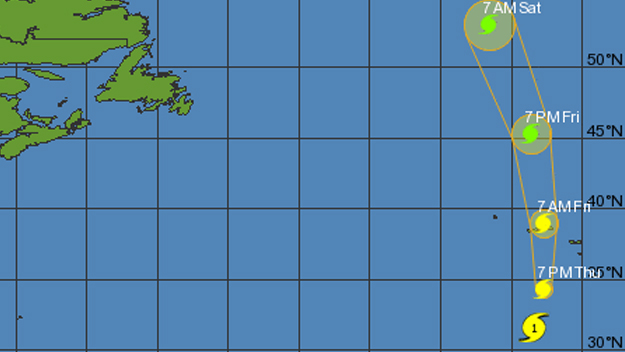Rare January hurricane moves closer to mid-Atlantic Azores
Satellite imagery now indicates the convection around the center of Alex has weakened, but the inner core is still in tact. Another record that Hurricane Alex can boast of is the fact that it is only the fourth storm ever to arrive in the atlantic in the month of January since 1851 – the year since which weather records began.
A local Civil Protection Service on Thursday issued a weather red alert for five of Portugal’s nine Azores Islands after a massive hurricane was detected in the Atlantic Ocean. An El Niño-related tropical storm formed south-west of Hawaii last week. The new Atlantic hurricane is the first one to form this early (in January) since 1938, NASA says, citing the National Hurricane Centre (NHC). This surpassed the 80-mph peak of both Alice and the 1938 hurricane.
Nevertheless, it said Alex was likely to lose its tropical characteristics by Friday afternoon or overnight as it moved over colder waters. Alex is already a bit stronger with winds at 85 miles per hour as of late Thursday.
As of 10 PM on Thursday, authorities have warned residents in the islands of Pico, Faial, Graciosa, Sao Jorge, and Terceira to take precautionary measures as Hurricane Alex approaches.
Alex is expected to produce total rain accumulations of 3 to 5 inches over the Azores through Friday, with possible isolated maximum amounts of 7 inches. According to The Atlantic, the storm could bring flash floods and mudslides, as well as large, risky waves near the coast.
“Gale-force winds from a swirling body of low pressure that passed north of Bermuda caused sporadic power outages, and had many wondering if hurricane season had somehow come back”, the Royal Gazette previously reported. Hurricane “season” is considered June 1 through November 30.
The Government of the Azores has declared a state of emergency for Friday, January 15, following warnings that tropical storm Alex, a ‘category 1′ hurricane, is expected to hit the islands hard.
Hurricanes do not typically form when sea surface temperatures are below 26° Celsius (78.8 degrees Fahrenheit), so it seemed uncanny for Alex to form when water temperatures in the northeast Atlantic were roughly 22°C.








